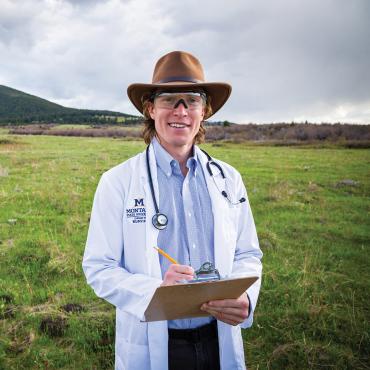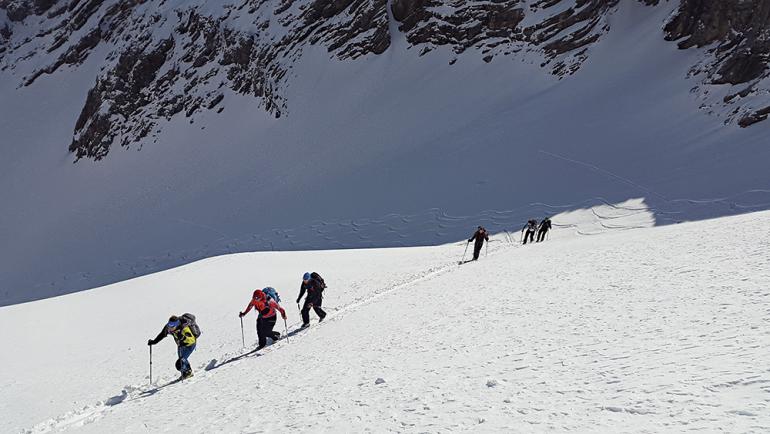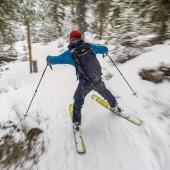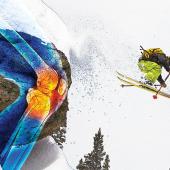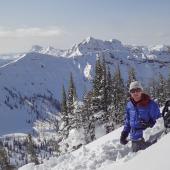Supply & Demand
An interview with the Gallatin National Forest Avalanche Center.
As backcountry use booms in the Bozeman area, the Gallatin National Forest Avalanche Center has a lot to keep up with. Director Doug Chabot weighs in on how they’ve kept stride.
With seven different mountain ranges less than an hour’s drive from town, the opportunities for backcountry skiing around Bozeman are pretty much limitless. Whether you’re looking for mellow glades in the foothills or daunting couloirs in the high peaks, you’re certain to find your fix. Over the past two decades, backcountry skiing has grown from a niche sport for hardened souls to a mainstream seasonal activity. We talked with Gallatin National Forest Avalanche Center (GNFAC) director Doug Chabot about the change in scenery with more people getting out in the backcountry, and discussed the implications for avalanche safety with an increased user base. Doug has been skiing in southwest Montana since 1986, and worked as a ski patroller at Bridger for nine years before becoming director of the GNFAC.
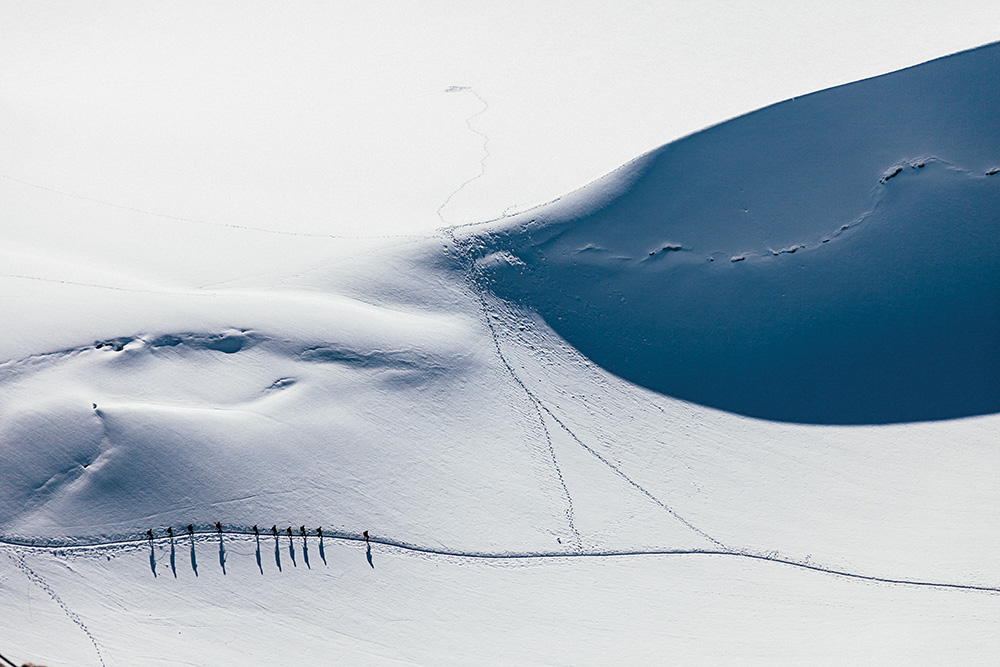
O/B: What did GNFAC and the backcountry-skiing scene in Bozeman look like when you first started forecasting?
Doug: GNFAC started out as a one-man show in 1990; Karl Birkeland was running the whole operation. I joined in 1995 when Karl went to graduate school. There were way less people backcountry skiing, and people stuck to the regular places, like Mount Ellis and Beehive. You couldn’t get up Hyalite unless you had a snowmobile, but sleds weren’t as useful back then because they weren’t powerful enough to get into avalanche terrain.
O/B: How has the scene changed since then? Why do you think backcountry skiing has become so much more popular?
Doug: People started moving here to recreate, and the population grew. Really, all outdoor activities have become more popular. People want to get outside; they want to exercise and breathe fresh air, and around here, you can get into some pretty remote areas. It’s not just backcountry skiing and snowmobiling; there’s been an increase in recreation across the board, year-round. When you combine that with a growing population, the effect is amplified. We’re just trying to keep people safe, because each sport has its own risks.
O/B: What are the implications of increased backcountry use on avalanche risk?
Doug: People who want a true wilderness experience have to go out farther, so you have more people in remote areas where rescue is difficult. In the more popular areas, you see more conflicts arise with more people. Everyone out there is a potential avalanche trigger. When you add more triggers, you’d expect to see more avalanches, and in fact, we do.
O/B: So we’re seeing more avalanches—are we also seeing more accidents?
Doug: Even though we’re seeing more avalanches triggered, we’re not seeing a rise in avalanche fatalities. And we believe that’s because the education has come such a long way, and is so widely available. We have a lot of avalanche classes, both with GNFAC and private outfits. We have an avalanche center right here in Bozeman, which not every ski town can lay claim to. We put out forecasts seven days a week, all winter long, and give people relevant information. We’re field-based—we’re out there getting real data, and making videos so we can show people what the snowpack looks like. It’s a growing population, but it’s an educated growing population.
O/B: What are some other challenges in forecasting that have come along with backcountry skiing’s increased popularity?
Doug: We’re seeing more people go to new areas, and people don’t want to give away their secret spots. But there are only four of us at GNFAC, so we rely on observations from the public. And we respect keeping your spot secret. We might just refer to the mountain range, rather than the specific slope. All observations are good. People think they need to be really scientific, but they don’t—even the most basic information tells us something.
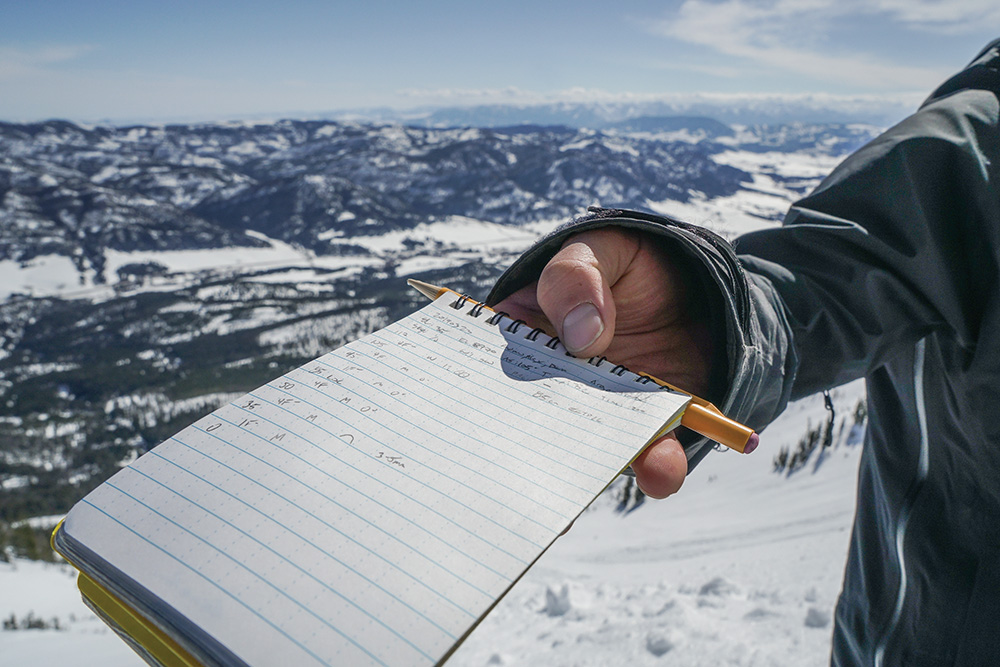
O/B: Are there any ways in which having more people in the backcountry actually increases avalanche safety?
Doug: We’ve been getting more data at the avalanche center. Reports and pictures from the public allow us to put out much better forecasts because we have data from areas we aren’t able to go to. Also, more people are carrying radios and satellite messaging devices, so if something goes wrong, people are quicker to call for help. The people out there are trained—they’ve taken courses, and they know how to conduct a rescue. You might get the advisory, dig pits, and make conservative calls about where you want to ski, but you have to know how to do a rescue. You might be the first one on the scene.
O/B: Are new backcountry skiers generally coming from a background of resort skiing, or do you see a lot of folks start out skiing in the backcountry?
Doug: We haven’t done a study, but we’ve definitely seen an increase in skiing the sidecountry terrain at Bridger. They’re accessing terrain from the ski area, but they’re backcountry skiing once they cross the ropeline. We’re also seeing a lot more people using snowmobiles to access backcountry-skiing areas. And with MSU, there are three to four thousand new students showing up each year who are hungry to ski, and a lot of them start out skiing in the backcountry.
O/B: What does “sidecountry” mean to you? Is there really a distinct zone between in-bounds and backcountry skiing?
Doug: In terms of avalanches, it’s a black-and-white issue. Whether you’re on Saddle Peak or way up in the northern Bridgers, the slope doesn’t care—it doesn’t know that it’s right next to a ski area. It doesn’t matter. What matters is our behavior. In areas where you can exit a ski area, ski in the backcountry, and get to the bottom of the lift in one run, it’s easy to mistakenly view the slopes as safer, or even as part of the ski area. Whereas if you’re skinning out from a trailhead, you need special gear, it requires more work, and those people generally have more education. At the avalanche center, we don’t differentiate between backcountry and sidecountry. It’s a term that the public uses—it’s in our language—but it’s a backcountry snowpack.
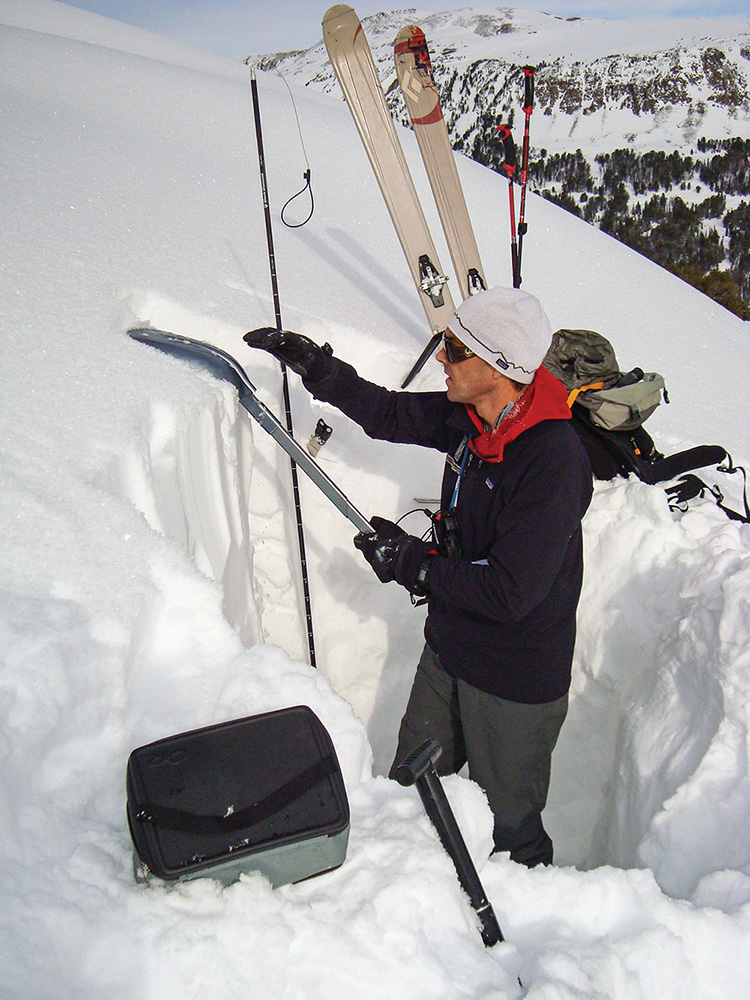
O/B: What kinds of problems can arise from misperceptions of sidecountry skiing?
Doug: These areas are popular, as they should be, and I’m glad they exist. The problem comes in when, for example at Bridger, you can see Saddle Peak right from the lift; you can watch everyone come down hooting and hollering, spraying up powder plumes, hiking the Ridge—it’s incredibly enticing. But one of the biggest mistakes people can make is believing that the presence of ski tracks mean that a slope won’t avalanche. There are many dead and injured people who have been buried on tracked-out slopes. The snowpack here lends itself to holding weak layers deep in the snowpack that persist for months. It’s not uncommon for Saddle Peak to avalanche after hundreds of tracks.
O/B: Are there any other concerning trends you’ve seen with more people backcountry skiing?
Doug: We see more and more skiers that ski solo. Simply put, skiing solo is riskier than not skiing solo. If anything goes wrong, you have nobody there to help. It could be pulling you out of a tree well, helping you with a blown-out knee, or even a small avalanche that could tip you upside down and bury you. On Saddle Peak, we had a fatality where the guy’s hand was sticking out of the snow. It could’ve been an easy rescue, but no one was around to reach him. But when you are with a partner, ski one at a time in avalanche terrain—and we mean literally one at a time. Not wait 30 seconds and go, but actually only one person exposed at a time.
O/B: We hear a lot about the human factor in decision-making about avalanche danger—any tips on how to address this issue?
Doug: It all boils down to communication. If we want to be safer, it’s better to communicate. Sometimes we get tunnel-vision out there: we’re trying to keep up on the skintrack, or transition quickly, and we don’t take time to talk about the snow. What we recommend at GNFAC is that you stop, put your shovel in the snow, and do a test. The act of digging provides an opportunity to slow down and specifically talk about snow stability. A lot of the problems with human factors go away as soon as someone digs a pit. If you watch your partner do a stability test and it fractures, you have something to talk about, and this helps eliminate bad decisions.
O/B: What about other groups that we come across? If we see something sketchy, should we speak up? Or let people make their own decisions?
Doug: Everyone has a different philosophy. You might ask them about what they’ve seen, and factor that into your decisions. The number-one piece of information you can get is whether there has been an avalanche recently. If someone else has seen a slide, you don’t need to be digging pits—you know that the snow is unstable. If you have a piece of information that would be valuable to others, it’s your responsibility to share that, especially if it relates to dangerous conditions. If I see something unsafe, where if I say something it might prevent injury or death, I’ll say it. If you see something bad, you want to tell people.
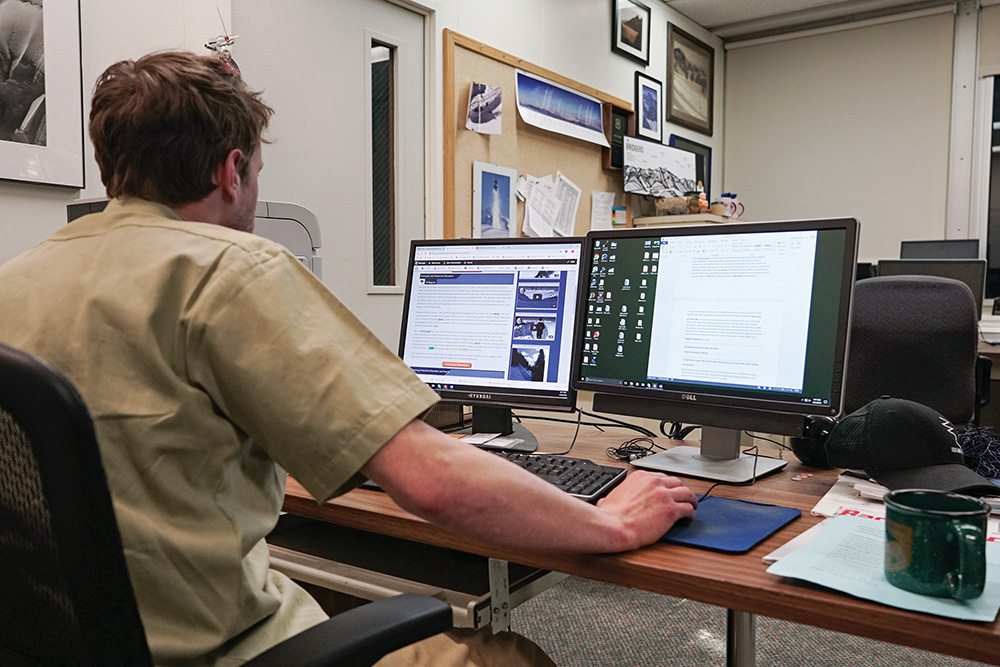
O/B: What are some things that anyone can do to increase avalanche awareness, regardless of whether they’re getting out in the backcountry?
Doug: Bozeman is a recreational community. Even if you don’t backcountry ski, you can learn about the resources available and point people in the right direction. At GNFAC, we reach out not only to skiers, but to spouses, parents, relatives—anyone can help get the word out and make sure their loved ones are educated. When we put out a warning that it’s really dangerous out there, parents and spouses have a strong voice in what happens with their families.
O/B: Backcountry skiing can be an intimidating sport to get involved in—what’s your advice for people who are just getting started?
Doug: Anyone who’s beginning the sport in Bozeman should do two things. One: before you even go outside, subscribe to the GNFAC avalanche advisory at mtavalanche.com. It will get you thinking about avalanches, seeing forecasts every day, and watching our videos. You can learn a ton from seeing what weak snow looks like, and what stable snow looks like. We try to present everything in plain language that everyone should understand. Two: take an avalanche class with a field component. Then you’ll start to see how everything fits together. You’ll see avalanche terrain, and you’ll see what a weak layer looks like in the snowpack. And of course, that’s assuming you have the gear. MSU has a rental program for students, and we have a limited amount of rescue gear to loan folks in our classes. But if you’re investing in becoming a backcountry skier, gear and education are part of the investment—there’s no shortcut.

